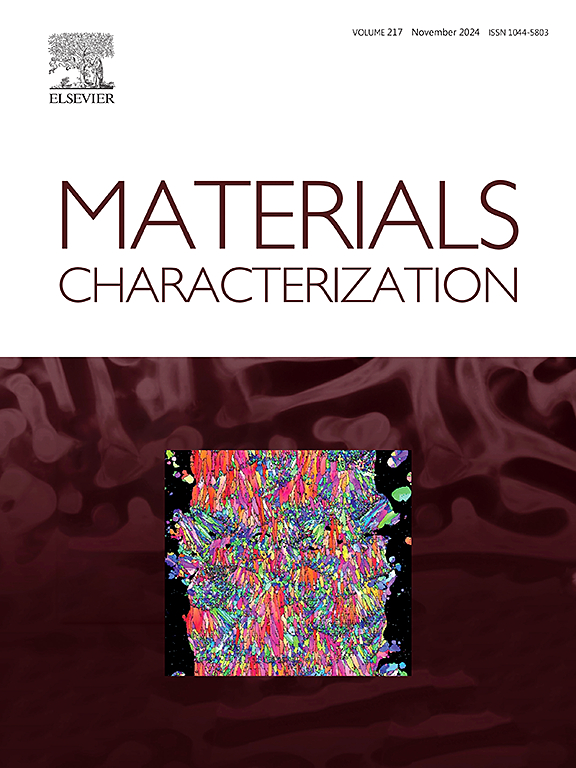Improving recrystallization of ultrasonic welded joint of SiCp/Al composites via pulsed current
IF 4.8
2区 材料科学
Q1 MATERIALS SCIENCE, CHARACTERIZATION & TESTING
引用次数: 0
Abstract
In this study, we innovatively applied pulsed current to enhance the recrystallization of SiCp/Al composites during ultrasonic welding for the first time. The results show that the grain size of Al matrix is significantly refined from 15 μm to 2 μm by pulsed current. The optimization of grain size observably increases the tensile load of the joint from 2.0 kN to 3.7 kN. The improvement in recrystallization is attributed to the pulsed current facilitating the movement and multiplication of the dislocations in the Al matrix. Meanwhile, due to the lattice mismatch between SiC and Al, the dislocation is difficult to pass through the SiCp, leading to substantial dislocation be accumulated at the SiC/Al interface. Moreover, the electron density around the particles is higher due to the shape effect of particles on electron motion, which will provide a driving force for the evolution of accumulated dislocation towards grain boundary. The process of recrystallization will consume accumulated dislocation and promote the subsequent movement of dislocations. Ultimately, the grain size of the SiCp/Al composites joint is refined and the peak failure load is increased.
脉冲电流改善SiCp/Al复合材料超声焊接接头的再结晶
在本研究中,我们首次创新地应用脉冲电流来增强SiCp/Al复合材料在超声焊接过程中的再结晶。结果表明:脉冲电流使Al基体晶粒尺寸由15 μm细化到2 μm;晶粒尺寸的优化使接头的拉伸载荷由2.0 kN显著提高到3.7 kN。再结晶的改善是由于脉冲电流促进了Al基体中位错的移动和倍增。同时,由于SiC和Al之间的晶格失配,位错难以通过SiCp,导致大量位错在SiC/Al界面积聚。此外,由于粒子形状对电子运动的影响,粒子周围的电子密度更高,这将为累积位错向晶界的演化提供动力。再结晶过程会消耗累积的位错,促进位错的后续移动。结果表明,SiCp/Al复合材料接头晶粒细化,峰值破坏载荷增大。
本文章由计算机程序翻译,如有差异,请以英文原文为准。
求助全文
约1分钟内获得全文
求助全文
来源期刊

Materials Characterization
工程技术-材料科学:表征与测试
CiteScore
7.60
自引率
8.50%
发文量
746
审稿时长
36 days
期刊介绍:
Materials Characterization features original articles and state-of-the-art reviews on theoretical and practical aspects of the structure and behaviour of materials.
The Journal focuses on all characterization techniques, including all forms of microscopy (light, electron, acoustic, etc.,) and analysis (especially microanalysis and surface analytical techniques). Developments in both this wide range of techniques and their application to the quantification of the microstructure of materials are essential facets of the Journal.
The Journal provides the Materials Scientist/Engineer with up-to-date information on many types of materials with an underlying theme of explaining the behavior of materials using novel approaches. Materials covered by the journal include:
Metals & Alloys
Ceramics
Nanomaterials
Biomedical materials
Optical materials
Composites
Natural Materials.
 求助内容:
求助内容: 应助结果提醒方式:
应助结果提醒方式:


